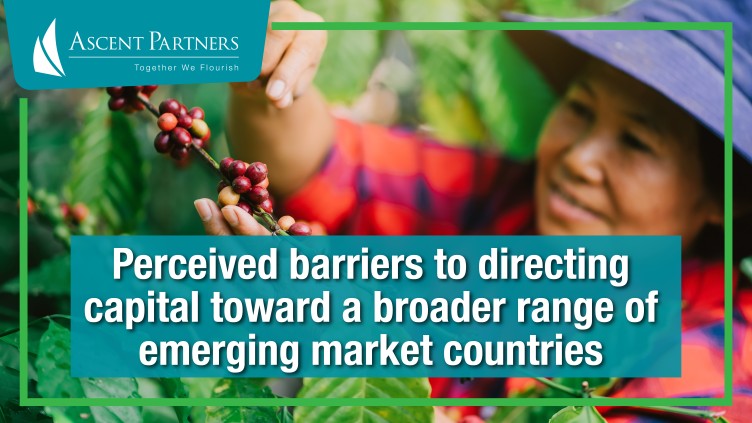
Perceived barriers to directing capital toward a broader range of emerging market countries
In the aftermath of COP27 in November 2022, where the need to mobilise private capital for emerging economies was widely discussed, “innovative financing solutions” were widely touted a solution – but they appear to be proving the exception rather than the rule.
Investors have said there are a number of factors preventing them from directing capital towards a broader range of emerging market countries and assets that will help the industry keeps pledges such as the Glasgow Financial Alliance for Net Zero commitment to “increase the mobilisation of finance to accelerate the transition of key sectors and deployment of climate solutions in emerging markets”.
One of the main laments, the lack of investable solutions, is often cited, but at COP27 the UN published a list of emerging market sustainability projects worth $120bn, including ones that could be invested in quickly and easily by private investors, such as the Seychelles Blue Bond, and the Oman Water and Wastewater Services Company.
“We can now show a meaningful pipeline of investible opportunities does exist across the economies that need finance most,” Mahmoud Mohieldin, a UN Climate Change High-Level Champion, said during COP27.
When approached on the broad question of would such sustainable investments be attractive, a spokesperson from Invesco said “Invesco’s due diligence and investment approach doesn’t necessarily follow UN projects and these specific recommendations. However, we do invest in opportunities that capture the objective and focus of the UN”.
Invesco’s MSCI Emerging Markets Climate Paris Aligned Ucits ETF, which launched in June last year, is most exposed to China, at 31.7% of the portfolio, with a top holding, 6.93%, in Taiwan Semiconductor.
So it seems to be a disconnect between the opportunities available, and the more traditional investment strategies utilised by the bigger investors. Perhaps the smaller players are more open to the economic opportunities that emerging markets offer currently.
‘Innovative financing solutions can make a real difference to improve economic opportunities and reduce environmental damage’, Jean-Philippe de Schrevel, Managing Partner, Bamboo Capital Partners said.
Another reason given for the shortfall in emerging market ESG sustainable investing is lack of, or unreliable, data, although this has been improving.
There has been an explosion in data since about 2018, but it’s still far from where investors feel confident enough to invest.
“Back in 2017, coverage of the indices for basic ESG data was less than 50%. Now it’s close to 90% for emerging market corporate indices and 100% for sovereign indices. Information on physical and transition risk around climate change, which was non-existent five years ago and only at around 30% coverage even a year ago, is now at around 80%“, according to Simon Cooke, emerging markets portfolio manager at Insight Investment.
So, as data coverage improves, emerging markets may once again benefit from innovative financing solutions, and in particular transition financing, to wean the Asia Pacific region off its reliance on fossil fuel-dominated and more traditional industry-based, societies.
